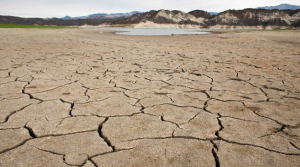
Economists See Role For Data in Battling Drought

As data lakes grow wider and deeper while drought persists in large sections of the American West, economists and other big thinkers are considering how to use big data to get a handle on the increasingly precious commodity: fresh water.
One possible big data application proposed by social scientists is leveraging existing statistical and analytical tools along with databases traditionally used to track customer demand to gauge water usage. Based on demand, water districts could for example use those insights to develop new pricing structures. The models would price water at higher rates as it becomes more scarce. The economic models suggest that consumers would use less water as the price goes up, thereby preserving an increasingly scarce resource.
“Instead of the uniform tiered water structure that many California water customers are used to (and which has been at the center of recent legal challenges), consumers would be able to opt in to a pricing structure not unlike selecting a cable package,” Matthew Kahn, an economics professor at the University of Southern California, explained in a recent column published by the San Francisco Chronicle.
“This subset of consumers would be alerted ahead of time — via email, snail mail or text — to the price of water per gallon so they would be prepared to change their behavior,” Kahn added.
Kahn and other economists argue that big data tools currently used to track consumer sentiment such as price sensitivity and demand for products can be pressed into service to address drought. While some insist firm data is lacking on water supply levels, Kahn argued there is no shortage of data points when it comes to demand.
“In this age of the smartphone, differential water pricing becomes increasingly easy to implement and provides a free-market solution to the ongoing drought challenge,” he argued.
Other economists are applying demographic data on the distribution of households in a water district’s territory to gauge the impact of new pricing structures on demand. For example, Frank Wolak, an economics professor at Stanford University and director of its Program on Energy and Sustainable Development, posits that a statistically significant group of water consumers would respond to a 10 percent water price increase by reducing their consumption. Wolak estimates water usage in California could be reduced by more than 7 percent, contributing to efforts to conserve water as a lengthy drought continues despite recent heavy El Nino rains.
The incentives to apply these statistical models in an effort to conserve water are growing, USC’s Kahn stressed, because recent data indicates that California is falling short of its goal of a 25 percent reduction in water usage.
Whether the combination of big data techniques and El Nino rains is enough to reverse the drought in California and other western states remains to be seen. In the meantime, economists see big data as one tool in gauging consumer response to price increases for water. Such an approach could eventually yield results that constitute more than just a drop in the bucket.
Recent items:






























